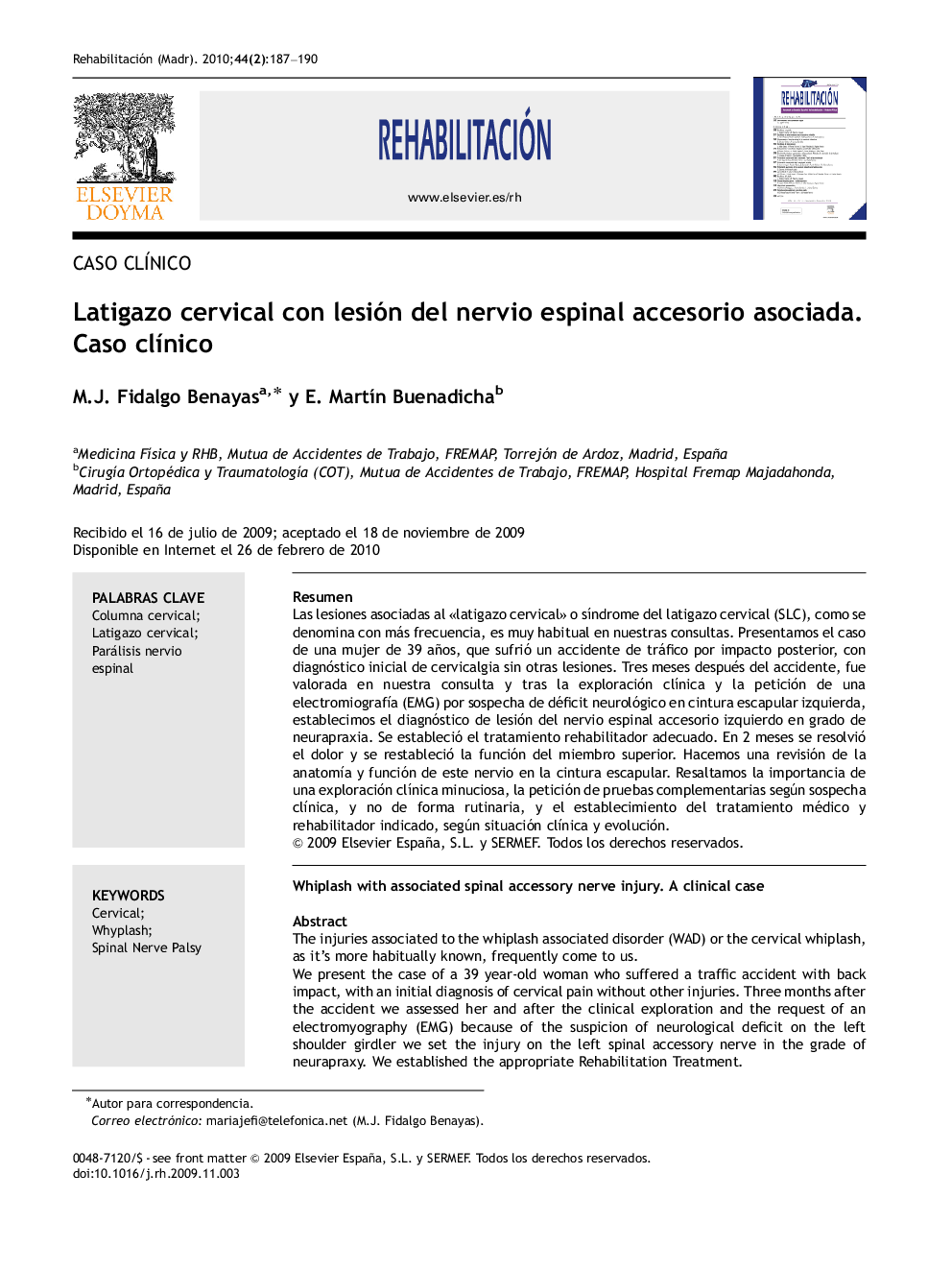| Article ID | Journal | Published Year | Pages | File Type |
|---|---|---|---|---|
| 4084971 | Rehabilitación | 2010 | 4 Pages |
ResumenLas lesiones asociadas al «latigazo cervical» o síndrome del latigazo cervical (SLC), como se denomina con más frecuencia, es muy habitual en nuestras consultas. Presentamos el caso de una mujer de 39 años, que sufrió un accidente de tráfico por impacto posterior, con diagnóstico inicial de cervicalgia sin otras lesiones. Tres meses después del accidente, fue valorada en nuestra consulta y tras la exploración clínica y la petición de una electromiografía (EMG) por sospecha de déficit neurológico en cintura escapular izquierda, establecimos el diagnóstico de lesión del nervio espinal accesorio izquierdo en grado de neurapraxia. Se estableció el tratamiento rehabilitador adecuado. En 2 meses se resolvió el dolor y se restableció la función del miembro superior. Hacemos una revisión de la anatomía y función de este nervio en la cintura escapular. Resaltamos la importancia de una exploración clínica minuciosa, la petición de pruebas complementarias según sospecha clínica, y no de forma rutinaria, y el establecimiento del tratamiento médico y rehabilitador indicado, según situación clínica y evolución.
The injuries associated to the whiplash associated disorder (WAD) or the cervical whiplash, as it's more habitually known, frequently come to us.We present the case of a 39 year-old woman who suffered a traffic accident with back impact, with an initial diagnosis of cervical pain without other injuries. Three months after the accident we assessed her and after the clinical exploration and the request of an electromyography (EMG) because of the suspicion of neurological deficit on the left shoulder girdler we set the injury on the left spinal accessory nerve in the grade of neurapraxy. We established the appropriate Rehabilitation Treatment.In two months’ time, the pain was resolved and the superior limb function was established.We revise the anatomy and this nerve function on the shoulder girdle. We emphasize on the importance of a careful clinical exploration, the need of complementary tests based on the clinical suspicion and not in a routine way, and the establishment of the medical and rehabilitation treatment according to its evolution and clinical situation.
